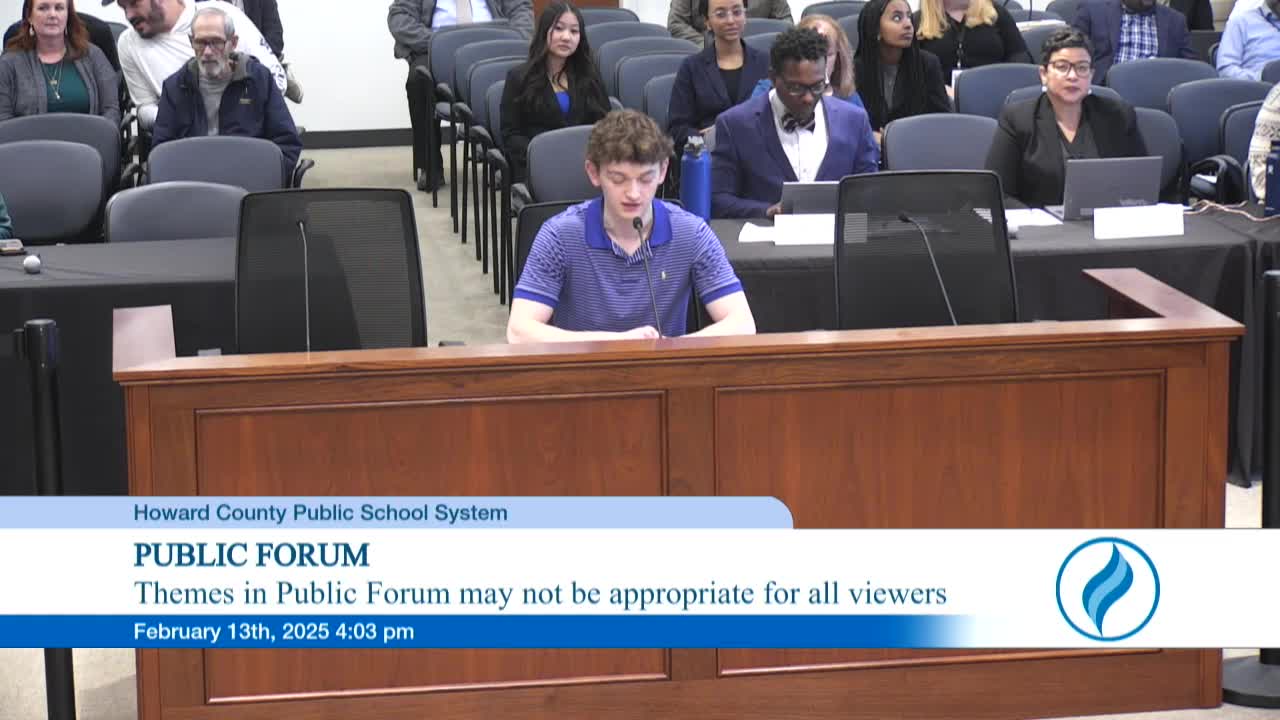Students urge HCPSS to reconsider restrictive cell phone policy after 4000 sign petition
February 13, 2025 | Howard County Public Schools, School Boards, Maryland
Thanks to Scribe from Workplace AI , all articles about Maryland are free for you to enjoy throughout 2025!

This article was created by AI using a video recording of the meeting. It summarizes the key points discussed, but for full details and context, please refer to the video of the full meeting. Link to Full Meeting
Students expressed frustration that their input was overlooked during the policy's development. Many felt that the proposed changes, which acknowledged the necessity of technology in their lives, were disregarded. For instance, students with divorced parents raised concerns about their ability to communicate with family members for transportation and support, emphasizing that the policy could leave them feeling isolated and anxious.
The policy's enforcement is expected to burden teachers, who will need to monitor cell phone usage during class, potentially disrupting instructional time. Students argued that a balanced approach, similar to one adopted by neighboring Anne Arundel County, could better address the issue of cell phone use while still recognizing its importance in modern life.
In addition to the cell phone policy discussions, the meeting also addressed troubling incidents of antisemitism within the school district. A parent of a Jewish student highlighted a series of hate-filled incidents that have created a hostile environment for students. The parent criticized the district's previous handling of these incidents and called for more robust actions to ensure a safe and inclusive atmosphere for all students.
The meeting underscored the urgent need for the Board of Education to listen to student voices and take decisive action against discrimination while also considering the practical realities of technology use in schools. As the community watches closely, the Board faces the challenge of balancing policy enforcement with the well-being of its students.
Converted from Howard County Public Schools - 4 & 7 p.m. Meeting of the Board of Education of Howard County - Feb 13, 2025 meeting on February 13, 2025
Link to Full Meeting
Comments
View full meeting
This article is based on a recent meeting—watch the full video and explore the complete transcript for deeper insights into the discussion.
View full meeting


